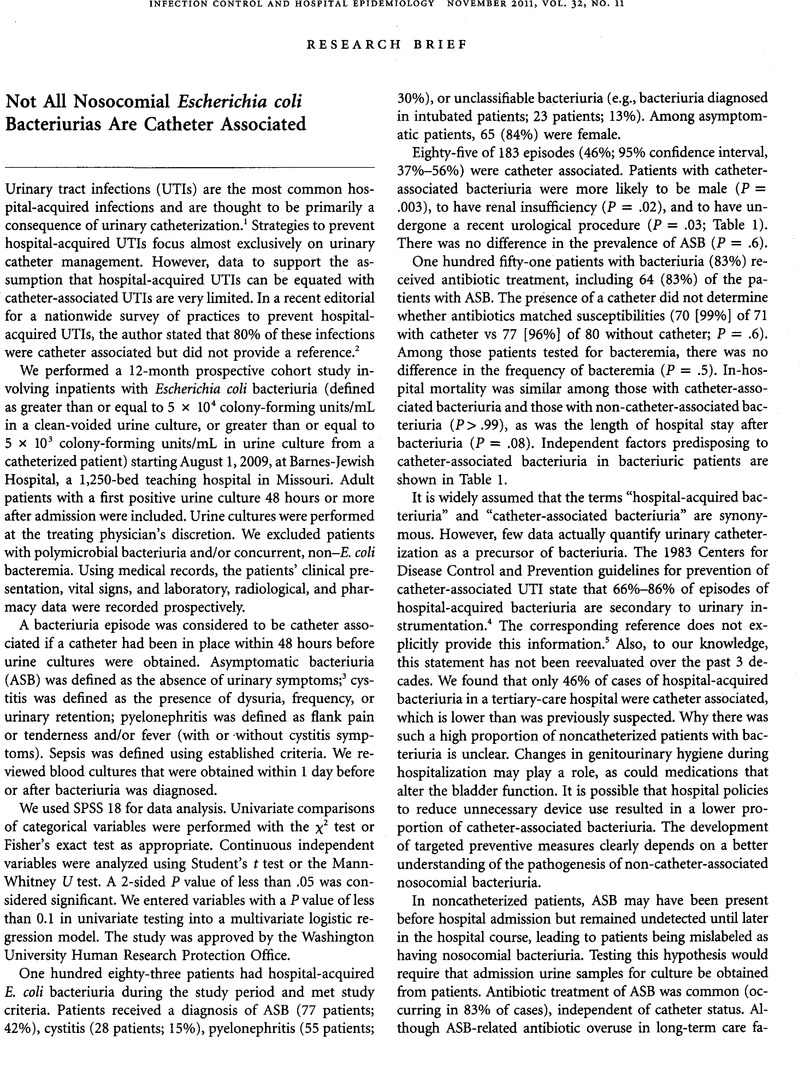Crossref Citations
This article has been cited by the following publications. This list is generated based on data provided by Crossref.
Fletcher, S.
Haill, C.
and
Jenks, P.J.
2012.
Escherichia coli bacteraemia: how preventable is it?.
Journal of Hospital Infection,
Vol. 80,
Issue. 4,
p.
355.



